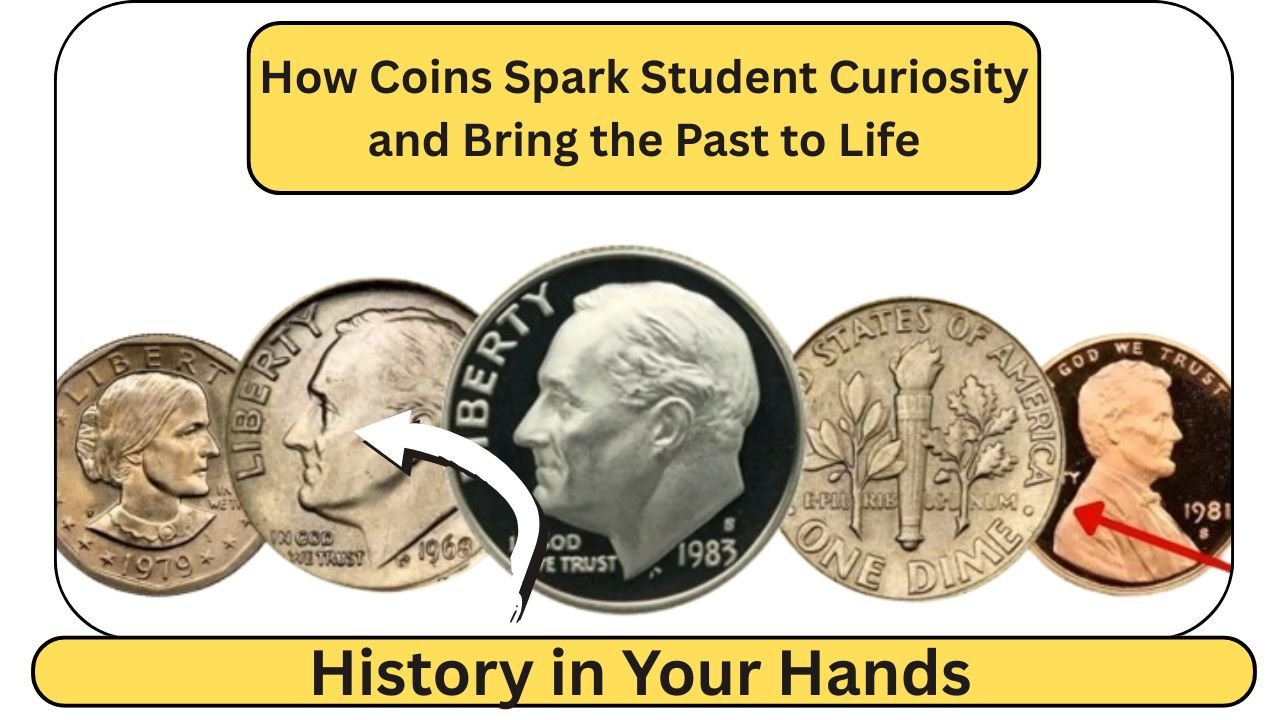A single coin can open a window to the past, and students across the USA are catching the coin-collecting bug in 2025! From rare Lincoln Pennies to Bicentennial Quarters, these tiny pieces of history spark curiosity and make learning fun. A middle school in Ohio recently found a 1943 copper penny worth $10,000 in a classroom jar, igniting excitement among kids and teachers. X posts show students trading coins and sharing stories, proving that coins do more than buy candy—they bring history to life. Let’s explore how coin collecting inspires students and connects them to America’s story.
Coins Tell Stories of the Past
Every coin has a tale to tell. The 1976 Bicentennial Quarter, with its drummer boy design, celebrates America’s 200th birthday, while the 1913 Buffalo Nickel shows a Native American and bison, tying to the Wild West. Students love the Lincoln Wheat Penny (1909–1958) for its link to Abraham Lincoln and World War II history, when 1943 pennies were made of steel to save copper. Teachers use coins to teach about presidents, wars, and art, making history feel real. A Virginia student on X said, “I found a 1969 penny and learned about the moon landing that year!”
Why Students Love Coin Collecting
Coin collecting, or numismatics, is like a treasure hunt for kids. Rare coins, like the 1943 copper penny (worth up to $1.7 million) or the 1969-S Doubled Die ($25,000), get students excited about finding “hidden treasure” in change. Errors, like doubled text or missing mint marks, teach them to observe closely. Schools are starting coin clubs, where kids trade pennies and learn about grading coins for condition. It’s not just about money—students discover stories of immigrants, wars, and inventions, making history and math lessons way more fun than reading a textbook.
Top Coins Students Hunt For
Students are on the lookout for these valuable coins:
- 1943 Copper Penny: Only a few exist, worth $10,000–$1.7 million.
- 1969-S Doubled Die Penny: Blurry date or letters, worth $1,000–$25,000.
- 1976 Bicentennial Quarter: Silver versions or double-die errors, $5–$19,200.
- 1918/7-D Buffalo Nickel: Overdate error, up to $601,000.
- 1975 No-S Roosevelt Dime: Missing mint mark, $300,000–$456,000.
| Coin Type | Key Feature | Value Range |
|---|---|---|
| 1943 Copper Penny | Copper, not steel | $10,000–$1.7M |
| 1969-S Doubled Die | Blurry date/letters | $1,000–$25,000 |
| 1976 Bicentennial | Silver or error | $5–$19,200 |
| 1918/7-D Nickel | Overdate error | $500–$601,000 |
How Coins Spark Classroom Learning
Teachers are using coins to make history hands-on. In a California school, students sorted Wheat Pennies by year, learning about the Great Depression and WWII. A Texas class studied the 1976 Quarter to explore the American Revolution, tying it to art and government. Coin clubs teach kids about mint marks (“D” for Denver, “S” for San Francisco) and how coins are made at the U.S. Mint. Some schools invite coin experts or use apps like PCGS CoinFacts to check values, blending tech with history. X users share how kids trade coins, building teamwork and research skills.
Where Students Find These Treasures
Coins are everywhere, making the hunt accessible for kids. Students check change from school lunches, vending machines, or parents’ coin jars. A New York student found a 1975 No-S Dime worth $500 in a piggy bank! Family collections, flea markets, or bank coin rolls are great spots to look. Teachers encourage kids to ask grandparents for old coins, often uncovering Wheat Pennies or silver quarters. X posts show students posting photos of finds, like a 1916 Buffalo Nickel, sparking friendly competitions to find the rarest coin.
Tips for Safe Coin Collecting
Found a cool coin? Don’t clean it—cleaning can ruin its value. Store it in a plastic coin sleeve. Use a magnifying glass to check dates, mint marks, or errors like doubled text. Compare finds to images on trusted sites like PCGS or NGC. Kids can show coins to a teacher or coin shop for help, and parents can contact grading services for authentication. If it’s valuable, auction houses like Heritage Auctions can sell it. X users warn of fake “million-dollar” coin scams, so stick to reliable sources like usmint.gov.
Why Coins Inspire Young Minds
Coin collecting is more than a hobby—it’s a way for students to touch history and get excited about learning. A $10,000 penny or $300,000 dime sounds thrilling, but the real value is in the stories kids discover, from Lincoln’s presidency to the Roaring Twenties. As America nears its 250th anniversary in 2026, interest in coins like the Bicentennial Quarter is growing. Encourage kids to check their change, start a coin club, or visit a local coin shop. With every penny, they’re holding history—and maybe a treasure that makes the past come alive!

